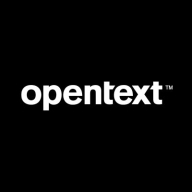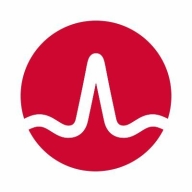

Symantec Endpoint Security and OpenText Core Endpoint Protection are both strong competitors in the endpoint security software market. Symantec has the upper hand in terms of comprehensive security features but may impact system performance, whereas OpenText is favored for its lightweight design and efficiency.
Features: Symantec Endpoint Security offers comprehensive solutions such as real-time threat detection, firewall management, and application control. These features are bolstered by extensive device and application controls. OpenText Core Endpoint Protection is known for reduced overhead, system responsiveness, and seamless cloud integration, which contribute to its lightweight structure.
Room for Improvement: Symantec users have reported high resource consumption and a cumbersome console management experience, with features being occasionally overwhelming. OpenText could improve on ransomware protection, enhance analytical tools, and provide more comprehensive malware detection capabilities.
Ease of Deployment and Customer Service: Symantec has a stable deployment process offering both on-premises and cloud management, although some users find it complex. Its customer support has had mixed reviews post-Broadcom acquisition. In contrast, OpenText features streamlined deployment via public and hybrid cloud options, with customer support receiving generally positive reviews.
Pricing and ROI: Symantec is considered more expensive but offers a good return on investment due to its extensive features. OpenText provides a straightforward pricing model seen as cost-effective, especially for those preferring lightweight, cloud-first solutions. Both solutions deliver worthwhile ROI, with Symantec excelling in comprehensive protection and integration at a higher cost.
| Product | Market Share (%) |
|---|---|
| Symantec Endpoint Security | 3.5% |
| OpenText Core Endpoint Protection | 0.9% |
| Other | 95.6% |


| Company Size | Count |
|---|---|
| Small Business | 35 |
| Midsize Enterprise | 2 |
| Large Enterprise | 2 |
| Company Size | Count |
|---|---|
| Small Business | 69 |
| Midsize Enterprise | 32 |
| Large Enterprise | 62 |
OpenText Core Endpoint Protection offers cloud-managed endpoint security with AI integration, providing real-time protection and lightweight performance. It ensures low system impact, seamless cloud integration, and cost-effective security solutions for various devices.
OpenText Core Endpoint Protection is a comprehensive endpoint security platform utilized by managed-service providers for antivirus and firewall functionality across servers, workstations, and mobile devices. It employs AI for robust threat detection, integrating with cloud applications for real-time updates. Multi-layered security features include malware protection, network defense, and DNS protection. Although connectivity and threat reporting need improvement, this platform extensively supports remote device management and integrates efficiently with Active Directory policies.
What are the key features of OpenText Core Endpoint Protection?OpenText Core Endpoint Protection finds application in industries requiring stringent data protection and peace of mind over device security. Managed-service providers implement this for comprehensive antivirus and firewall features, safeguarding multi-device networks. It is particularly useful for DNS protection and integrating with Active Directory policies, enabling secure yet flexible operations across sectors.
Symantec Endpoint Security is a robust and reliable product that provides complete protection against viruses, malware, Trojans, and malicious files. It offers application and device control, ease of use in deploying and updating, a central control console, stability, scalability, auto-discovery capabilities, patch management, endpoint detection and response capabilities, intrusion detection module.
The Symantec Global Intelligence Network (GIN) provides threat intelligence and detection across endpoints, email, and web traffic. It has helped organizations reduce downtime, increase productivity, and improve security posture. Symantec Endpoint Security is easy to use, has a flexible administration, and offers more value than expected.
We monitor all Endpoint Protection Platform (EPP) reviews to prevent fraudulent reviews and keep review quality high. We do not post reviews by company employees or direct competitors. We validate each review for authenticity via cross-reference with LinkedIn, and personal follow-up with the reviewer when necessary.